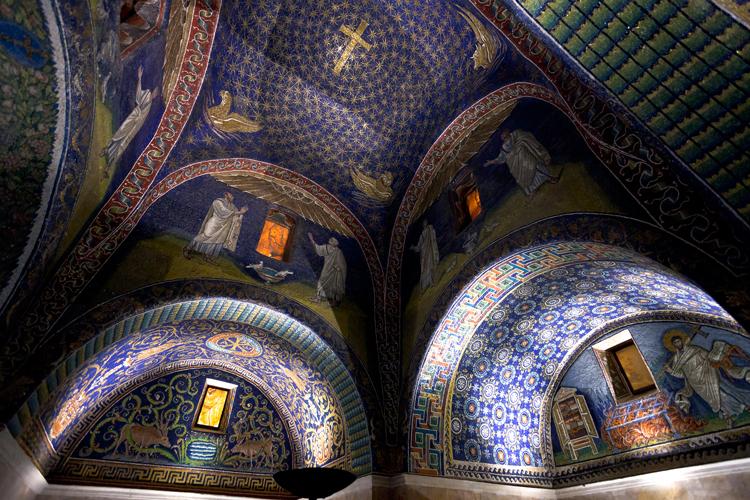When you think of the Roman Empire you think of Rome, but Ravenna, a thriving Roman port on the Adriatic sea, actually played a significant role in the history of the empire: it became the capital of the Western Roman Empire in 402, and remained so until the empire collapsed in 476. When it became capital, Ravenna lost its provincial aspect to transform into a magnificent imperial residence.
This is how it became home to some of the most significant examples of early Christian monuments, included by UNESCO in its World Heritage List.
One such monument is the Mausoleum of Galla Placidia (386-452), built as a funerary building by the powerful Galla Placidia, the daughter of Roman emperor Theodosius I (it was Galla Placidia’s brother, Honorius, who moved the capital of the Western Roman Empire to Ravenna). The building’s architecture and mosaics have preserved very well; UNESCO experts have described as “the earliest and best preserved of all mosaic monuments, and at the same time one of the most artistically perfect.”
The exterior, built in the shape of a Latin cross, is very simple, made of reused ancient Roman bricks, and almost contrasts with the decorative richness of the interior, where the mosaics entirely cover the walls of the vaults, the lunettes and the dome.
The grace and harmony of the mosaics are highlighted by the variety of bright colors: blue, green, gold and orange. The color blue, interspersed with flowers, stars, wheels, prevails over the others and creates a solemn and evocative atmosphere, made all the more magical by the light filtering through the alabaster windows.
The dome contains the most fascinating part of the decoration. There are 900 gold stars against a deep blue sky, with a cross in the center to symbolize resurrection. This decoration is said to have inspired Cole Porter’s song Night and Day.
Much of the walls are covered with decorative forms showing the influence of Roman and Christian tradition. The iconographic themes of the decorations represent the victory of life over death. The three sarcophagi were thought to contain the remains of Galla Placidia, her husband and her son; but it is now thought that Galla Placidia died in Rome and that the mausoleum was never used for the purpose she had intended.








